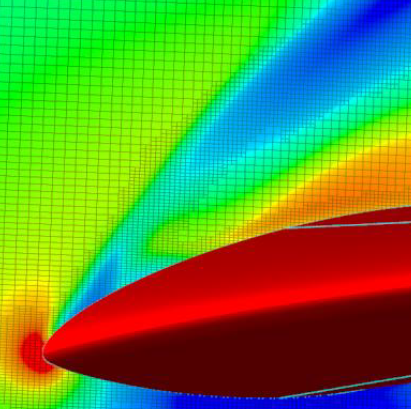CFD calculations of NREL Phase VI rotor under wide range of operation conditions were conducted using FlowVision software. Computations were performed for various wind speeds with axial inflow, constant RPM and constant blade pitch. The rotation of the blades was modeled via different approaches; steady-state with frozen rotor using rotating reference frame and transient with moving boundaries or sliding surfaces. In addition to this, an ‘Overlapping Boundary Layer (OBL)’ was implemented to resolve the boundary layer for a selected case. Turbulence models ‘k-ε-AKN and k-ω Shear Stress Transport (SST) were used and compared. Except the OBL case, FlowVision wall function approximation was employed for all calculations with y+ values between 30 and 100.

Overall results were compared for all of the above-mentioned numerical approaches and showed good agreement with the experimental data. k-ω SST turbulence model is found to perform better to predict stall onset. The stall occurrence and general torque trend as a function of wind speed is fairly well captured. Comparisons of the static pressure distribution around blades with experimental data at different span-wise sections for different wind speeds are presented and good agreement is observed.
A VALIDATION STUDY USING NREL PHASE VI EXPERIMENTS, PART I: LOW COMPUTATIONAL RESOURCE SCENARIO
A. Aksenov – U. Ozturk – C.Yu P. – Byvaltsev – S. Soganci – O. Tutkun Download PDF, 1.51 MB